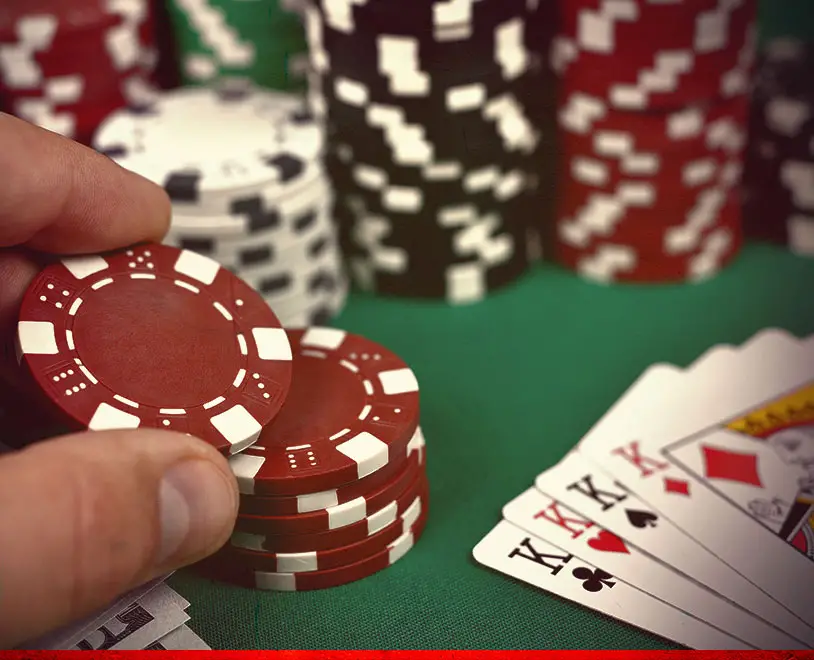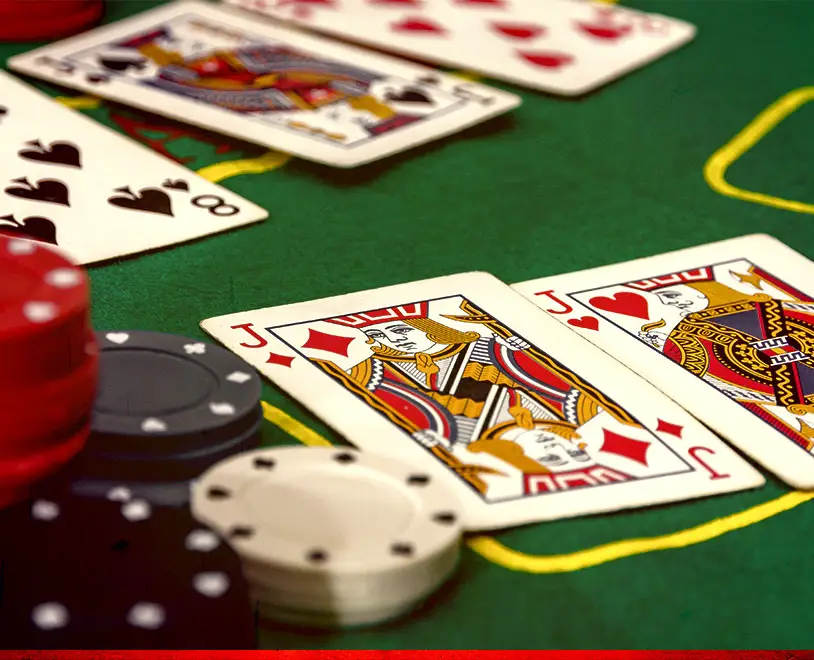In our Part One series on how to play online poker tournaments like a seasoned pro, we looked at the early stage of the multi-table poker tournament, when stacks are deep and the field is filled with recreational players. Now we’re moving into the middle stage, which presents us with a whole new set of challenges. The stacks aren’t as deep as they used to be, and the antes have kicked in; at this point, you need to change gears and play a different style of poker.
 Multi-Table Tournament Middle Stage Strategy
Multi-Table Tournament Middle Stage Strategy
We can’t emphasize enough how important the antes are when you play poker online. It might seem like you’re only throwing in a few extra chips, but everyone at the table has to do it, and once you combine all those antes with the small and big blinds, that means there will be roughly twice as much money on the table than normal – and that’s before a single card has been dealt.
Generally speaking, the more money there is to be won, the more aggressively you should be going after it. That means opening with a wider range of hands, and defending your big blind more often with both calls and raises. How far you should widen your ranges will depend on the size of the ante and how many players there are at the table, as well as their style of play. But as a very rough guide, imagine yourself moving one seat clockwise around the table, and use the same opening range you would from that position. For example, if you’re in the cut-off during the middle stage, open with the same range you normally would from the button – maybe about 50% of your hands instead of 30%.
For big blind defense when the antes are in play, pretend the open-raiser is one seat closer to you, and use the same defending range you would if that were actually the case. Let’s say it’s the cut-off who opens; they should widen their range so it’s more like the button’s (around 50%), so defend as you normally would against a button open. That means 3-betting with a few more value hands, and calling with many more speculative hands.
The pre-flop dynamics during the middle stage of a tournament spill over into post-flop play. Because people are opening and defending wider ranges preflop, the player in position will have incentive to bet the flop more often, expecting to induce a lot of folds, while the player out of position (usually the big blind) will want to fight back by check-raising more often. You can probably get away with a continuation bet rate of 100% in position, with a bet size of around one-third of the pot, while out of position, you can check-raise very thinly for value, even with second pair and third pair in Texas Hold’em, along with a healthy dose of bluffs like gutshots and backdoor straight flush draws.
The aggression level ramps up even more when you take stack size into consideration. By the middle stage of the tournament, you might be fortunate to have 40 big blinds in your stack. Once you and your opponents get down to 40bb, the stack-to-pot ratio (SPR) will be significantly lower than it was during the opening stage, and you won’t have as much room to run multi-street bluffs. Also, since there’s only 40bb at stake (tournament life notwithstanding), you’re not as worried about whether your opponents will complete their draws and beat your marginal made hands. So be willing to shove your entire stack all-in for thin value on the flop or turn, and put the onus on your opponent to fold. Do what you can to stay above 40bb and maintain some leverage; there’s always the next tournament if you bust this one.
 Basic Bubble Strategy: Short, Medium and Big Stacks
Basic Bubble Strategy: Short, Medium and Big Stacks
Speaking of stack size, make sure you’re paying very close attention to how many chips your opponents have. If you’re playing against a shorter stack, it doesn’t matter a whole lot whether you have twice or three times as many chips – the only chips you can win or lose are the amount your opponent has. This is called the effective stack size, and your poker strategy needs to adjust accordingly.
This becomes even more important once you get close to the money bubble. Just like you would in a Sit-and-Go tournament, your strategy here should fall in line with your stack size and the stacks around you. Short stacks who don’t have the luxury of waiting for other players to bust will have to play aggressively and hope to chip up. Medium stacks can take advantage of this, but they also have to be careful not to risk their tournament life when they could just as easily fold into the money. And the biggest stacks get to punish the medium stacks for their passive play – while also taking it easy on the shorties, hoping to keep the bubble dynamic intact while they collect chips from the stacks in between.
Executing Your Bubble Strategy
Actually putting this bubble strategy into play is one of thhey baby e trickier aspects of online poker. Real money USA players at Ignition can play up to 15 tournament tables at the same time, so if you’re multi-tabling, it will naturally be more difficult to keep track of everyone’s stack size and how close you are to the money bubble. You can make life easier on yourself by putting more focus on the tables where you’re nearly in the money, making their windows larger and/or moving them towards the top of your display.
It will also be more difficult to keep dibs on your opponents and their playing styles when you’re multi-tabling. But as much as you reasonably can, pay close attention to how often your opponents fold their big blind. Most players are too quick to fold, whether it’s because they don’t understand the impact the antes have on a tournament, or they’re just naturally passive. The more they fold, the more you should be willing to steal their blinds. The less they fold, the tighter your opening range should be.
Poker Tournament Tips (From the PROS)
Up to this point, we’ve been talking about stack size in terms of big blinds. However, because of those antes, it’s actually more useful in tournament play to think in terms of something called the M-ratio, or just M for short. Former backgammon champion Paul Magriel came up with this term, but it was 1995 World Series of Poker Main Event champ Dan Harrington who brought M into the limelight in the second volume of his Harrington on Hold’em series.
The concept of M is simple enough: How many orbits (that’s a full series of turns around the table) would you last if you simply stopped playing? Instead of measuring your stack relative to just the big blind, add up both blinds and all the antes in a full orbit, then divide that number into your stack. When you’re in the middle stage of a tournament, you’ll often be playing with somewhere around 10-20M. Again, as Harrington showed, you won’t have as much leverage during this stage; there’s less value in trying to make a big hand in Hold’em with small pairs and suited connectors, but you still want to be extra-aggressive and go for thin value, hoping to get above 20M and maintain as much leverage as possible.
Daniel Negreanu has made a living knowing when to hit the gas pedal and when to ease off with speculative hands. Negreanu, until recently the top-earning tournament player in poker history, made his name playing “small ball” with a wide range of hands, but less attention was paid to how Negreanu was adjusting his strategy as the tournaments worked their way into the middle stage. This is when high-ranking cards take on added value. Again, you’ll be going all-in quite frequently with just a pair once you’re around 10M or 40bb, so you’ll want the highest pairs and the highest kickers possible – which means playing a lot of Broadway hands and avoiding the small stuff.
Negreanu has also done a lot of work recently to keep up with the progress people have made with their tournament poker strategy. These days, you can download poker software and use it to analyze situations with great precision, allowing you to develop more accurate unexploitable strategies to use at the table. Not every poker pro is on board with this. Think of Phil Hellmuth, the 15-time WSOP bracelet winner. Pretty much every piece of strategic advice he’s given over the years is suspect now – although you should never discount the power of “white magic.” Getting a solid read on your opponent the way Hellmuth often does can be more valuable than just about any mathematically based poker strategy.
Now that you’re prepared to tackle the middle stages of a poker tournament, it’s on to Part 3: the Late Stage. We’ll show you how to handle the most stressful part of the tournament, where the really big money’s at stake. Until then, best of luck at the tables.
